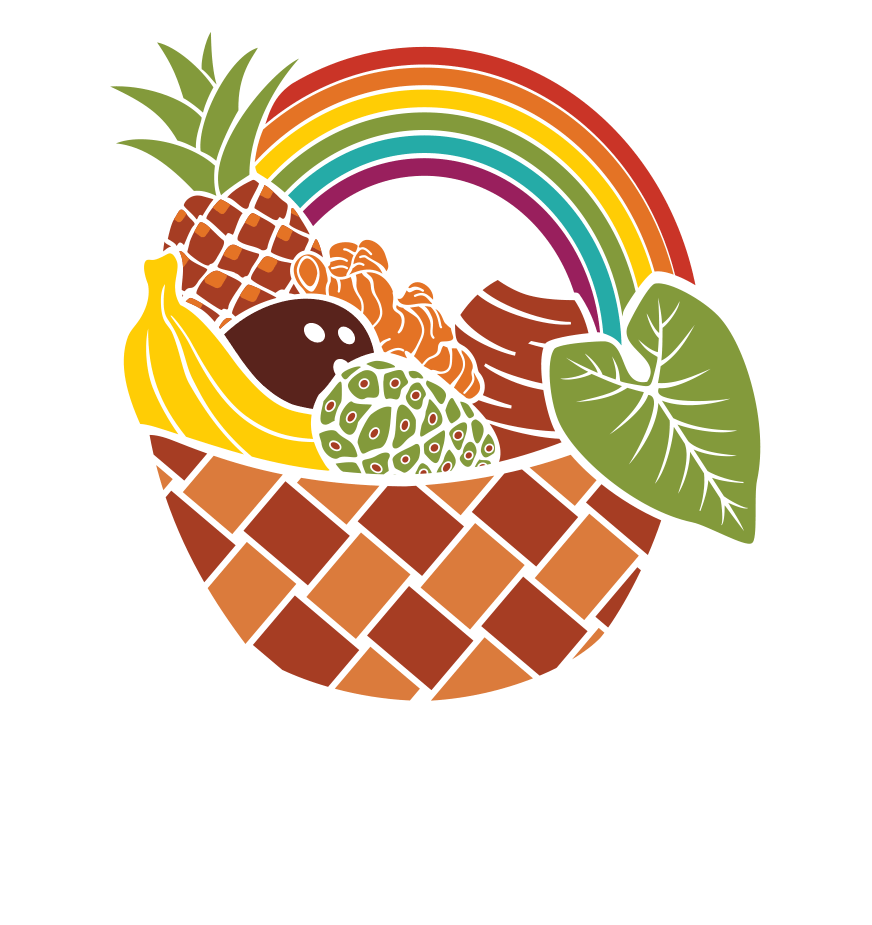During Pandemic, The Food Basket Is Serving 80,000 People A Month
By Stephanie Salmons, for the Hawaii Tribune Herald
One year has made quite a difference for The Food Basket.
This time last year, Hawaii Island’s food bank was providing assistance to about 14,000 individuals a month.
Now, though, in the midst of the ongoing COVID-19 pandemic, Executive Director Kristin Frost Albrecht said the nonprofit is helping about 80,000 people a month through its network of partner agencies, its Ohana Food Drop and other programs.
“It’s a significant change, and sometimes it sort of takes our breath away, but we have adapted and that’s the key thing,” Albrecht said. “We have adapted, and the community has adapted right along with us. That we have tremendous community support … is why we can do what we’re doing.”
The Ohana Food Drop is the food pantry’s main pandemic program, which Albrecht said was started in March as a safe and efficient way to deliver food to people who need it.
While the drive-through pickup program started with 14 locations across the island, she said food is now distributed at 10 Big Island sites each month.
Albrecht said The Food Basket is serving between 2,000 and 3,700 individuals at each site, and nearly 80%-85% of those who come through are unemployed.
The food bank’s Kupuna Pantry, a commodity supplemental food program through the U.S. Department of Agriculture, was also changed to a drive-through program in March, and serves about 1,100 kupuna islandwide, Albrecht said.
Individuals have to sign up and qualify for the program, which typically provides a 40-pound box of food each month, she explained.
“The one thing I will say about The Food Basket — we are experienced with crisis,” Albrecht said. “In the last couple of years, we’ve had hurricanes and lava, but there’s been nothing like this. (Those disasters have) helped ease us into this new normal of what we’re doing, but it’s a stunning number. There’s no two ways about it.”
The increased demand is taxing the nonprofit’s resources.
“We are nearly bursting at the seams,” Albrecht said. “Food comes in and goes out in such rapid paces.”
If there is an upside to the ongoing pandemic, Albrecht said, it’s that The Food Basket has developed new partnerships and collaborations, including partnerships with local distributors who help move food.
But much has changed.
While The Food Basket has purchased food for its keiki backpack program and community-supported agriculture program, Da Box, Albrecht said the organization hasn’t typically purchased food for emergency distribution.
But now, due to high demand and problems getting food from the USDA’s Temporary Emergency Food Assistance Program, “we are having to purchase food like we have never done before.”
The Food Basket routinely spends between $350,000-$450,000 a month on food purchases, Albrecht said, “and that is really courtesy of these amazing funders and supporters in the community that have come through to help us do this.”
The Food Basket has received $653,000 in federal coronavirus relief money through the state, which has only been used for food, and another $643,000 in Community Development Block Grant funding.
Another $223,000 in CDBG funding has yet to be approved, but Albrecht said that will be used to help with equipment “since we are at max capacity.”
Local foundations and local donors also have given to the food bank, “and continue to give,” she said. “That’s made it truly possible.”
Farmers have also donated produce to the food bank.
According to Albrecht, the food pantry also decided early on that any money spent on food would be spent locally.
“We haven’t bought any food off this island,” she said. The money has been spent locally with grocers, distributors, farmers, ranchers, fishermen and restaurants.
Albrecht said The Food Basket is using some CDBG funding to work with a restaurant which produces 2,000 portions of frozen, ready-to-eat food each week. Those are distributed through the ohana drops.
“This new economy, if it’s going to work — we know we have to keep all of our money here on this island.”
As far as current needs, Albrecht said monetary donations will allow the nonprofit to get what it needs at any given time.
Fresh products that are cleaned, packaged and ready to be distributed also are welcomed.
To donate, visit hawaiifoodbasket.org.
An Ohana Food Drop will take place at 10 a.m. today at the Cooper Center in Volcano.
Future distributions will take place throughout October in Waimea, Keaau, Kohala, Na‘alehu, Hilo, Waikoloa, Kona, Pahoa, Volcano and Honoka‘a.
Anyone can participate in the Ohana Food Drop, but must self-declare their need. Individuals should have a place in their vehicle to place the food.
Albrecht said each drop has different types of food depending on what has come in, but includes a box of nonperishable items, as well as some frozen or refrigerated items and fresh produce. A full list of the Ohana Food Drop locations and information about other programs can be found on The Food Basket website.

